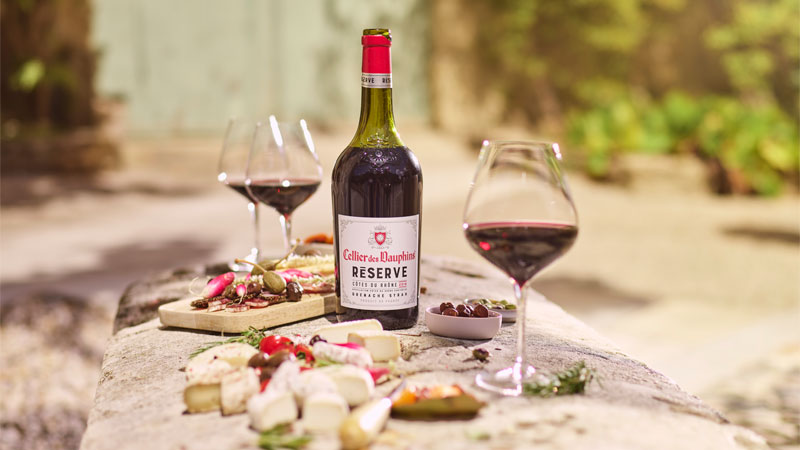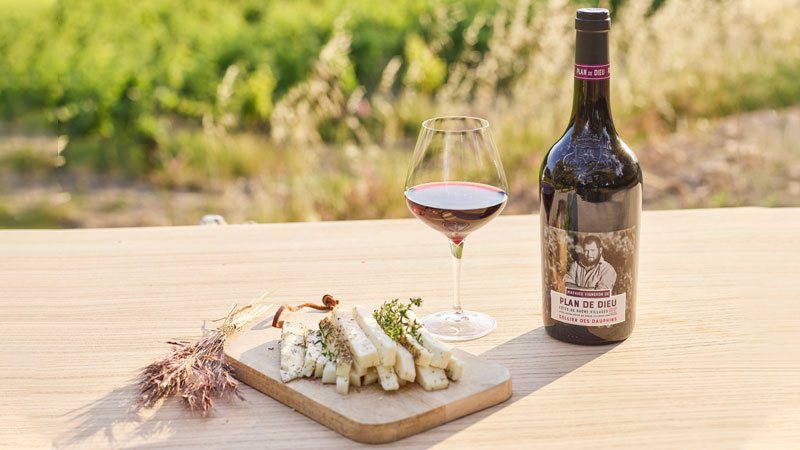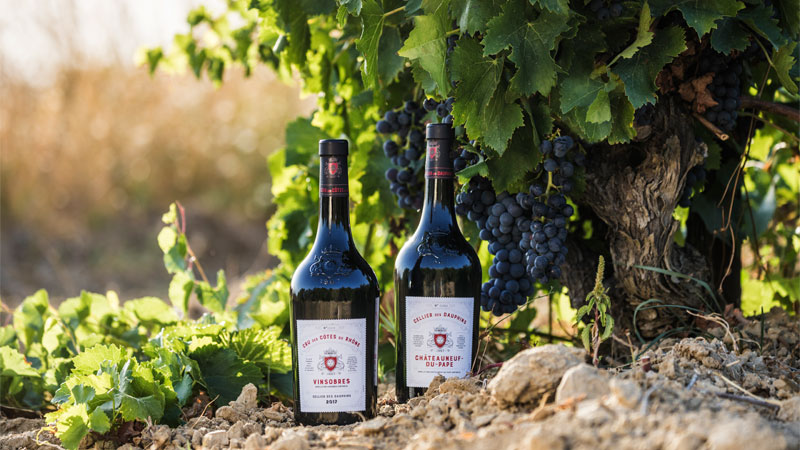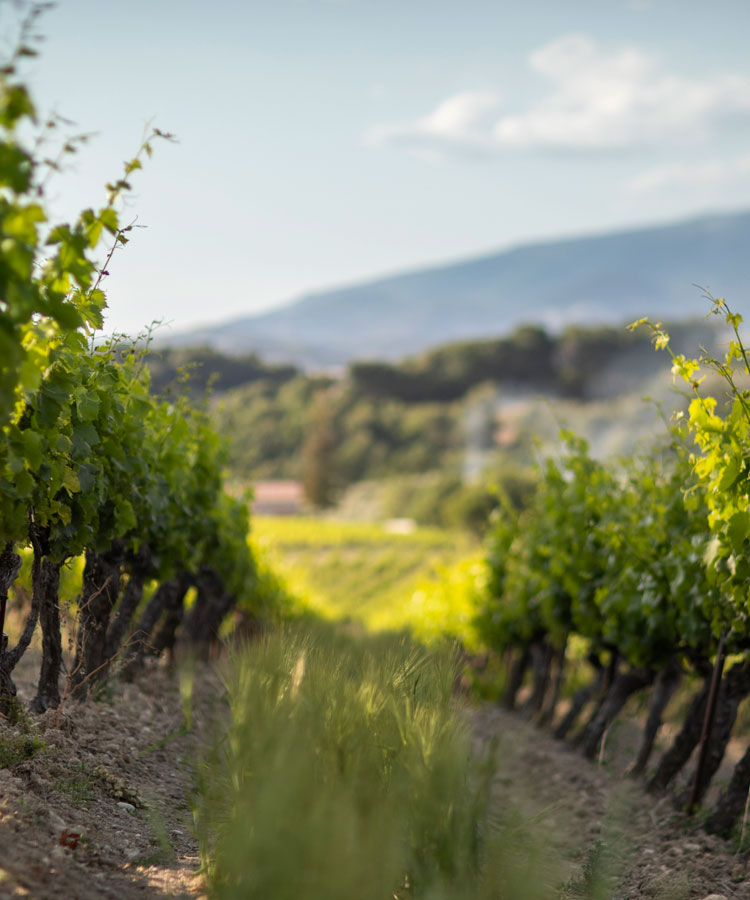
Experienced wine drinkers know that while the Rhône Valley is home to some of the more premium wines of France, it can also offer incredible value when it comes to balanced, drinkable reds that pair beautifully with just about any dinner on the table.
According to “The Oxford Companion to Wine,” aside from Bordeaux, the Rhône Valley regularly produces more AOC (Appellation d’Origine Contrôlée) wine than any other region in France, and among those quality wines are some real bargains. Case in point: Côtes du Rhône.
Cellier des Dauphins, a grower-owned cooperative winery nestled in the southern Rhône Valley, in the foothills of the southern Alps, is out to harness the 300 sunny days that this renowned region sees every year. Each of the bottlings in the producer’s range of wines speaks to their source in the Rhône Valley. Winemaker Laurent Paré travels across the southern Rhône, visiting and working with the cooperative’s growers spread across 11 villages of Cellier des Dauphins terroir. “I am in the vineyard with the growers every day, selecting the specific grapes that should go into each blend,” he says.” The soil, the altitude, the centuries of winemaking tradition, each is a character in the stories of these wines.
The Rhône River stretches from the Alps to the Mediterranean Sea, through an incredibly diverse expanse. At its southern end, between the cities of Vienne and Avignon, rolling hills meet plateaus of varying elevation under the strong Mediterranean sun. With long, warm summers and milder winters, the climate is Mediterranean, cooled by the Mistral wind blowing south from the mountains. Here, in the southern Rhône, Cellier des Dauphins produces modern wines that honor the region’s heritage style of round, fruity red wines driven primarily by Grenache.
Red Rhône blends are usually composed of some combination of three red grape varieties: Grenache, Syrah, and Mourvèdre, which together express layers of fruit, spice, and forest floor. But, thanks to a range of micro-terroirs, the flavor and texture possibilities are near-endless, offering something for everyone.
“There is a beautiful sense of conviviality among those of us who live and breath this terroir,” says Paré. “It’s our goal to communicate that through our wines, which are created to be shared around the table.” Through a community of winegrowers cultivating fruit in every corner of the southern Rhône Valley, Cellier des Dauphins is able to convey the entirety of the place and people, from broadly regional wines to specific crus, which means that their wines are a pretty great primer to the Rhône, covering reds, whites, and rosés. Here, a guide to three of its wine categories from most general to highly specific:
Côtes du Rhône
Thanks to the Romans, the Rhône Valley’s winemaking history stretches back more than a millennium, with viticulture believed to have existed in the region since 600 B.C. As such, even the entry-level wines of the Rhône have an immense history to offer —and at weekday-friendly prices.
The Cellier des Dauphins Réserve line showcases Côtes du Rhône at its most balanced and food-friendly. Take, for instance, the Cellier des Dauphins Côtes du Rhône Réserve Red, a blend of Grenache and Syrah. Along with notes of plum and cassis, it has minerality and herbaceousness that make it perfect for food. (It also does pretty well at a solo evening in with Netflix and a cheeseboard.) For a dinner party, braise a pork shoulder and serve several bottles of this complex, full-bodied beauty.

And, while red wine is king in the Côtes du Rhône, its round, rich whites are equally unforgettable. For Paré, the Réserve White shows ripe peach and apricot notes that speak to the flora of the Rhône. “We have lots of olive trees, lavender fields, and truffles,” he says. “We have thyme and rosemary. You can taste the influence of the landscape and the territory in the wine.” A blend of local grapes Viognier, Marsanne, and Grenache Blanc, the white’s opulence is balanced with freshness, making it a lovely aperitif wine, but also a no-brainer pairing for grilled fish or gooey, decadent cheeses.
Côtes du Rhône Villages
There are 21 distinct villages within Côtes du Rhône and Cellier des Dauphins’ Villages range highlights five of them, shedding light on village-specific nuances that aren’t always discernible when in a regional blend.
Championing the growers and microclimates that make these villages special, Cellier des Dauphins’ Villages bottlings each feature a photo of its local grower, with a few words from that person on their work and their land.
Mathieu, a former pastry chef, grows grapes in the rugged Plan de Dieu, in “the sunny plains of the Vaucluse,” he writes. His wine is bold and muscular with ripe fruit and spice, ideal with roast duck, grilled lamb, or any red meat cooked over an open flame.
The Puyméras bottling, featuring grower Laury, is wilder and more lithe. Coming from higher-altitude plots, this wine is predominantly made from Grenache and is reminiscent of blueberries and black currants. “I harvest Grenache grapes and make wine with elegant freshness, replete with notes of garrigue and wild berries,” Laury’s bottle reads. The wine’s silky tannins lend it to grain bowls, potato dishes, and mushroom-heavy fare.

The Crus des Côtes du Rhône
Drilling down further still, there are 17 demarcated crus in the Côtes du Rhône, eight in the north and nine in the south. Cellier des Dauphins highlights four of the southern crus: Vinsobres, Cairanne, Vacqueyras, and Châteauneuf-du-Pape. These singular wines are an opportunity to dive into the distinctive and expressive land.
Vinsobres is known for its unique geographic location, lodged between the Prealps and Mont Ventoux in an amphitheater-like formation with vineyards at 200 to 500 meters, creating a particular microclimate. Thanks to this combination of elevation and warm sun, the Cellier des Dauphins Vinsobres is characterized by a dark red hue, aromas of cherry, blackcurrant, and white pepper, yet maintains a finessed texture. The ancient name Vinsobres famously translates to “sober wine,” a bit of irony in an old adage that suggests the wine be consumed soberly to enjoy its nuances.
Cairanne is set on a rocky outcrop near the city of Orange in an area that is particularly hot and dry, but chilled by the Mistral. The land is peppered with scrubland brush, known as garrigue, comprised of wild herbs like rosemary and thyme. The Cellier des Dauphins Cairanne beautifully reflects this terroir with notes of ripe fruit, herbs, and velvety tannins.

Vacqueyras is known for its steep terraced vineyards and extreme diversity of soil types, delivering complex wines that show both power and elegance. A true example of this cru, the Cellier des Dauphins Vacqueyras is deep ruby red in color with notes of jammy black fruit, complemented by hints of spice and dusty leather.
Châteauneuf-du-Pape is a benchmark French wine, known for its structure and complexity. Meaning “the Pope’s new castle,” Châteauneuf-du-Pape takes its name from the 14th century when the Papal court relocated to Avignon. Châteauneuf-du-Pape was the first Appellation d’Origine Contrôlée (AOC) named in France, in 1923, and became the prototype for future designations. One of its many original delimitations was that any land used for vineyards was only suitable to the region if it was so arid that lavender and thyme would grow there. The Cellier des Dauphins Châteauneuf-du-Pape offers the complexity and typicity that’s come to be expected from this historied cru. It’s perfect with a steak simply salted with fleur de sel.
Paré says that choosing a favorite wine is like choosing a favorite child, but he’ll admit he has a penchant for Vinsobres, with its brambly verve and vigor. “The beauty of this territory lies in its diversity,” he notes, “and there is a wine for every type of gathering.”
This article is sponsored by Cellier des Dauphins.

